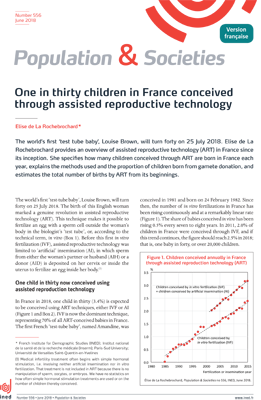One in thirty children in France conceived through assisted reproductive technology
Press release Published on 04 June 2018

The world’s first ‘test tube baby’, Louise Brown, will turn forty on 25 July 2018. Elise de La Rochebrochard provides an overview of assisted reproductive technology (ART) in France since its inception. She specifies how many children conceived through ART are born in France each year, explains the methods used and the proportion of children born from gamete donation, and estimates the total number of births by ART from its beginnings.
In France, one child in thirty is now being conceived through one of two methods of assisted reproductive technology (ART), either in vitro fertilization (IVF) or artificial insemination (AI). One baby in forty in that country is born using IVF. This share has been growing at a linear rate for over three decades. Altogether, 300,000 children were conceived in France by way of IVF from 1981 to late 2014. If this trend continues, the total will stand at 400,000 children by the end of 2019. Only 5% of ART activity in France involves gametes donated by a third party, primarily sperm, while there is a considerable shortage of donated eggs (oocytes). French law currently restricts ART to heterosexual couples of reproductive age. In this legal and organizational context, some French people go abroad to obtain donated gametes, particularly to Spain, Greece, the Czech Republic, Belgium, or Denmark.
Author: Elise de La Rochebrochard








